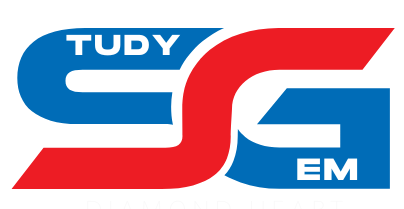Introduction
India’s commitment to improving maternal and child health has been reinforced through digital advancements like the rch nhm gov in portal. Under the National Health Mission (NHM), this platform facilitates the tracking, monitoring, and delivery of reproductive, maternal, newborn, child, and adolescent health (RMNCH+A) services across the country. In this blog, we will explore the objectives, features, benefits, and impact of rch.nhm.gov.in, ensuring an informative and comprehensive understanding of this critical healthcare tool.
1. What is rch.nhm.gov.in?
rch.nhm.gov.in is a dedicated online portal developed under the National Health Mission (NHM) to streamline RMNCH+A services. The platform is designed to facilitate the tracking of pregnant women, newborns, and children to ensure timely and effective delivery of healthcare services.
This centralized system provides access to vital data for healthcare workers, administrators, and policymakers, empowering them to make data-driven decisions to improve health outcomes.
2. Objectives of rch.nhm.gov.in
The primary objectives of the rch.nhm.gov.in portal include:
- Improving Maternal and Child Health: Ensuring timely antenatal, intranatal, and postnatal care for pregnant women and newborns.
- Enhancing Healthcare Coverage: Expanding the reach of RMNCH+A services to rural and underserved populations.
- Data-Driven Decisions: Providing real-time data for efficient planning and resource allocation.
- Strengthening Health Systems: Streamlining communication between different levels of the healthcare infrastructure.
3. Key Features and Functionalities
rch.nhm.gov.in offers a range of features to facilitate healthcare delivery and monitoring:
- Beneficiary Registration:
- Comprehensive data collection for pregnant women, newborns, and children.
- Unique identification numbers for tracking healthcare milestones.
- Service Delivery Tracking:
- Monitoring of antenatal check-ups, institutional deliveries, and immunizations.
- Ensuring adherence to healthcare protocols.
- Real-Time Reporting:
- Detailed analytics on service coverage and health indicators.
- Generation of customized reports for policymakers and health workers.
- Integration with Other Platforms:
- Seamless connectivity with state and district health systems.
- Links to related health programs like Mission Indradhanush.
- User-Friendly Dashboard:
- Intuitive interface for easy navigation and data access.
- Role-based access for different stakeholders.
4. How rch.nhm.gov Works
rch nhm gov in operates through a systematic approach:
- Registration:
- Healthcare workers register beneficiaries, including pregnant women and children, on the portal.
- Data is uploaded in real-time using mobile or web applications.
- Service Tracking:
- The system generates alerts and reminders for upcoming healthcare services.
- Tracks milestones like immunizations, deliveries, and postnatal check-ups.
- Monitoring and Reporting:
- District and state administrators monitor progress through dashboards.
- Comprehensive reports help in identifying gaps and improving service delivery.
- Feedback Mechanism:
- Beneficiaries can provide feedback on the quality of healthcare services received.
5. Benefits of rch.nhm.gov
The rch nhm gov in portal has revolutionized RMNCH+A services in India. Here are its key benefits:
For Beneficiaries:
- Access to timely and quality healthcare services.
- Increased awareness about maternal and child health programs.
For Healthcare Workers:
- Simplified beneficiary tracking and service delivery.
- Enhanced efficiency through digital tools.
For Administrators and Policymakers:
- Real-time insights for data-driven decisions.
- Improved resource allocation and program implementation.
For the Healthcare System:
- Strengthened coordination between different levels of healthcare.
- Better monitoring of health outcomes and program performance.
6. Challenges and Future Prospects
Despite its success, the rch.nhm.gov portal faces challenges that need to be addressed:
Challenges:
- Digital Divide: Limited internet connectivity in remote areas.
- Training Needs: Ensuring that healthcare workers are proficient in using the platform.
- Data Accuracy: Addressing issues related to incomplete or incorrect data entries.
Future Prospects:
- Enhanced Technology: Incorporating AI and machine learning for predictive analytics.
- Wider Integration: Linking with wearable health devices and telemedicine platforms.
- Increased Accessibility: Expanding internet and mobile coverage to rural areas.
FAQs About rch.nhm.gov
Q1: What does rch.nhm.gov stand for?
A1: The portal stands for Reproductive and Child Health under the National Health Mission.
Q2: Who can access rch.nhm.gov?
A2: Healthcare workers, administrators, and authorized personnel involved in RMNCH+A services.
Q3: How does rch.nhm.gov improve maternal health?
A3: The portal tracks antenatal check-ups, institutional deliveries, and postnatal care, ensuring timely interventions.
Q4: Can beneficiaries access rch.nhm.gov directly?
A4: While the portal is primarily for healthcare workers, beneficiaries receive updates and alerts through linked mobile applications.
Q5: Is rch.nhm.gov integrated with other health initiatives?
A5: Yes, it is linked with programs like Mission Indradhanush and other NHM initiatives.
Conclusion
rch nhm gov in exemplifies the power of digital innovation in transforming healthcare delivery. Ensuring timely access to RMNCH+A services has improved maternal and child health outcomes across India. As the portal evolves, its potential to bridge healthcare gaps and empower communities will further solidify its role in building a healthier nation.




